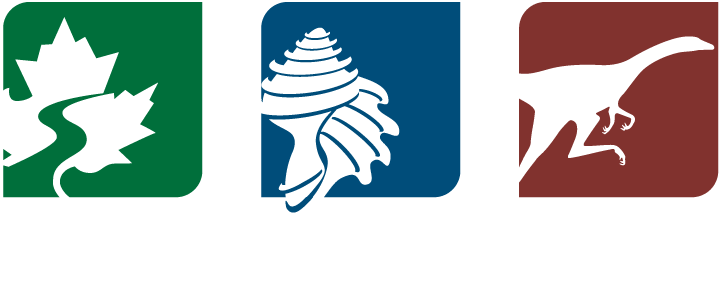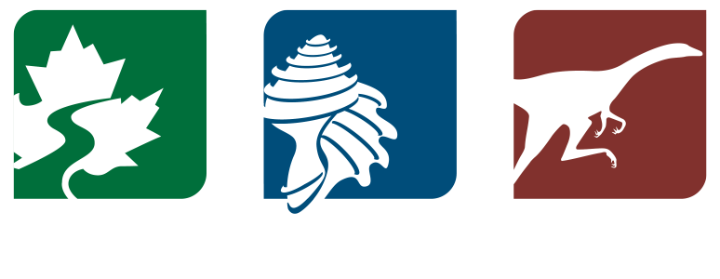Marina Suarez
Marina Suarez
Marina Suarez
Paleoclimatologist
Marina Suarez is a paleoclimatologist. She uses isotopes and other tools to learn about temperature and precipitation in ancient climates.
Marina grew up loving Indiana Jones and rock collecting. She went on to earn a bachelor’s degree in geoscience from Trinity University in San Antonio, Texas. Afterwards, Marina pursued a master’s degree alongside her twin sister at Temple University.
As a graduate student, Marina made an incredible discovery – a new dinosaur! This new species, Geminiraptor suarezarum, was named after Marina and her sister, who witnessed the discovery. Marina also uncovered a new site to dig for dinosaur fossils.
Marina began studying climates during her Ph.D. at the University of Kansas. She earned a fellowship at Johns Hopkins University and got to teach at the University of Texas, San Antonio, in her hometown. Now, she is a faculty member at the University of Kansas.
Please share any positive experiences you’ve had with mentors or role models during your career:
“I would not have been able to get to my position without lots of great mentors... My Ph.D. advisors Dr. Luis Gonzalez and Dr. Greg Ludvigson helped me to overcome my fear of chemistry and complete my Ph.D. Having a Latino Ph.D. advisor was the first time I recognized that having a person that was also Latino made a difference in our mentorship. Dr. Gonzalez understood the kinds of challenges minority scientists face. Lastly, I can also say my peer mentors have helped – fellow students when I was a student and fellow faculty members. Especially my twin sister, who is also a geologist.”
Selected works by Marina Suarez
Suarez, M.B., L.A. González, and G.A. Ludvigson. 2011. Quantification of a greenhouse hydrologic cycle from equatorial to polar latitudes: The mid-Cretaceous water bearer revisited. Palaeogeography, Palaeoclimatology, Palaeoecology 307: 301–312. Link
Suarez, M.B., G.A. Ludvigson, L.A. González, A.H. Al-Suwaidi, and H.-L. You. 2013. Stable isotope chemostratigraphy in lacustrine strata of the Xiagou Formation, Gansu Province, NW China. In A.-V. Bojar, M.C. Melinte-Dobrinescu, and J. Smit, eds. Isotopic studies in Cretaceous Research. Geological Society Special Publication 382: 143–155. Link
Suarez, M.B., G.A. Ludvigson, L.A. González, and H.-L. You. 2017. Continental paleotemperatures from an Early Cretaceous dodomitic lake, Gansu Province, China. Journal of Sedimentary Research 87: 486–499. Link
Suarez, M.B., T. Milder, N. Peng, C.A. Suarez, H. You, D. Li, and P. Dodson. 2019. Chemostratigraphy of the Lower Cretaceous dinosaur-bearing Xiagou and Zhonggou formations, Yujingzi Basin, northwest China. Journal of Vertebrate Paleontology 38 (supl. 1): 12–21. Link
Suarez, M.B., J.A. Knight, A. Godet, G.A. Ludvigson, K.E. Snell, L. Murphy, and J.I. Kirkland. 2021. Multiproxy strategy for determining palaeoclimate parameters in the Ruby Ranch Member of the Cedar Mountain Formation. In I. Davison, J.N.F. Hull, and J. Pindell, eds. The basins, orogens and evolution of the southern Gulf of Mexico and northern Caribbean. Geological Society Special Publication 504. Link
Further reading
Abdul-Alim, J. 2018. Emerging scholar profile: Suarez makes geological history. Diverse Issues in Higher Education, 6 February 2018. Link
Semro, M. 2020. Digs, dinosaurs, and distinguishment. Trinity University News, 12 November 2020. Link
Video & audio content
Natural History Museum of Utah: Polar DinoFest: A conversation with Anne-Laure Decombeix, Nate Smith, and Marina Suarez. Video, 23 January 2021, via YouTube. Link
Natural History Museum of Utah: Stay Curious, Utah! Live Q&A with paleocliamtologist Dr. Marina Suarez for 6th–12th grades. Video, February 2021, via Vimeo. Link
WNYC Studios: Ten things that scare me. Featuring Marina Suarez. Audio (with transcript), 13 February 2019. Link




